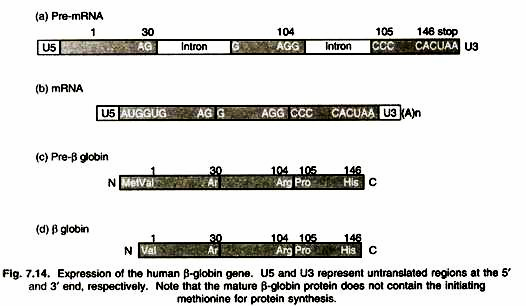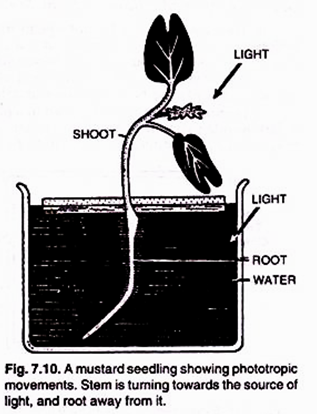Chromosomes are threadlike deeply stained compact DNA protein complex that carry genetic information in a linear sequence of genes.
They are the physical basis of heredity or hereditary vehicles as they store, replicate, transcribe and transmit the genetic information.
Though the scope of the term include the bacterial nucleoid (prochromosome), organelle genomes, viral genomes and eukaryotic nuclear chromosome, but only the last one considered as typical chromosome.
History:
W. Hofmeister (1848):
First discovered chromosomes in the dividing pollen mother cells of Tradescantia.
Strasburger (1875):
First observed chromosome during cell division.
W. Flemming (1879):
Described the splitting of dark stained rod-like structures during cell division which he called as chromatin.
Beneden and Boveri (1887):
First discovered that the number of chromosome in a given species remains constant.
W. Waldyer (1888):
Coined the term chromosome.
Sutton and Boveri (1902):
Proposed the chromosome theory of inheritance.
Boveri (1932):
He described chromosomes as bearer of hereditary traits.
Kornberg (1974):
Proposed the concept of chromosome ultra-structure in the form of nucleosome.
Chromosome Number:
Each species contain a fixed number of chromosomes (Beneden and Boveri, 1087). However, change in chromosome number can be seen in a species and is called as polyploidy (euploidy and aneuploidy). Normally gamete or gametophyte cells contain one set of chromosomes called genome and the cells are called naploid. The somatic cells of animals and sporophytes have two haploid sets or genomes and are said to be diploid cells.
Minimum:
Mucor hiemalis (bread mould), n-2
Haplopappus gracilis (Family-Asteraceae), 2n=2
Ascaris megalocephala (horse roundworms), 2n = 2
Maximum:
Ophioglossum reticulum (Adders tongue fern) 2n = 1272
Aulocantha sp (protozoa), 2n = 1600.
Chromosome size:
The size of chromosome is normally measured at mitotic metaphase. The length may vary from 0.1 – 50.0/µm while the diameter may vary from 0.2-3/µm. In general monocots among plants have large chromosomes while Orthoptera (Grasshopper) and Amphibia among animals have larger chromosomes.
Structure or Morphology of Chromosome:
The shape and size of chromosomes change along with cell cycle. During interphase the chromosomes remain in form of chromatin reticulum. During cell division, the chromatin reticulum condenses, so that by the end of prophase distinct thread like structures appear called chromonemata (sing, chromonema). In metaphase and anaphase the chromonemeta become fully condensed and take the shapes of chromatids in eukaryotic nuclear chromosomes. This cyclic change in shape and size of chromosomes during cell cycle is called chromosomal cycle.
The morphology of chromosome is best studied at metaphase and anaphase because of their high degree of condensation. The sample taken for this purpose, is mainly from shoot or root apex containing meristematic tissue or from pollen mother cells of plants, and tissue from sex organs and WBC in animals.
A typical chromosome has following parts:
(a) Centromere (Primary constriction):
A metaphase chromosome has two identical sister chromatids, which are attached to each other at a point called centromere or primary constriction. At anaphase the centromere splits the sister chromatids separate to become two anaphasic chromosomes. Therefore anaphase chromosome is a half metaphase chromosome. The parts of chromosome on either side of centromere are called arms.
Thus metaphase chromosome has four arms while anaphase chromosome has two arms. The two arms are equal in isobrachial chromosomes and unequal in heterobrachial chromosomes. When the arms are unequal, the short arm is designated as ‘p’ and the long arm is designated as ‘q’.
Based on the position of centromere, chromosomes are called:
(i) Telocentric (centromere terminal),
(ii) Acrocentric (centromere subterminal and capped by telomere),
(iii) Sub-metacentric (centromere is submedian),
(iv) Metacentric (centromere median).
Normally chromosomes are monocentric (one centromere); sometimes chromosomes may be dicentric (e.g. in wheat, maize etc.) or polycentric (e.g. Luzula. Ascaris etc.). However, in some insects the centromere is diffused along the length of chromosome.
(b) Kinetochore:
The surface of centromere bear a specialized multi-protein complex called kinetochore to which spindle fibers (microtubules) attach. The centromere of a metaphase chromosome contains 2 kinctochores facing in opposite direction. Kinetochore is trilamilar type in lower plants while ball and cup type in higher plants.
(c) Secondary Constrictions:
Besides centromere achromosome may have one or more secondary constrictions. The part of chromosome beyond secondary constriction is called satellite or trabant which remains attached to the main part of chromosomes by a thread of chromatin. The chromosome having satellite is called sat chromosome. Secondary constriction s are of two types NOR and Joint .They are always constant in their positions and often used as markers. The NOR (nucleolar organizer region) are specialized to produce nucleolus and rRNA. The joints sometimes develop due to breaking and fusion of chromosome segments.
(d) Telomeres:
The terminal ends of chromosomes are called telomeres. A telomere is a short repeated DNA sequence (GC rich) complexed with proteins. They are synthesized separately and later add to the chromosomal tips.
The telomeres help is various ways:
(i) Provide stability by preventing end fusions of chromosomes,
(ii) Act as initiators of synapsis,
(iii) Shortening of telomeres causes senescence and aging.
(e) Chromo-meres:
Sometimes along the entire length of interphase chromosomes appear beaded due to accumulation of chromatin. These bead-like structures are called chromo-meres. At metaphase the chromo-meres are tightly coiled and are no longer visible.
Ultra-structure of Chromosome:
A metaphase chromosome has two sister chromatids, each about 700nm in diameter. The electron microscopic studies have revealed that, each chromatid consists of a central non histone core called scaffold or nuclear matrix, from which loop of 30 nm chromatin fiber fan out radially. Each lateral loop is about 300nm long and has up to 100 Kb of DNA.
Types of Eukaryotic Chromosomes:
1. A-chromosomes:
It is the normal invariant set of chromosomes which are diagnostic of the species.
2. B-Chromosomes (Supernumerary or Accessory or Satellite chromosomes):
First reported by Wilson (1905). These are extra chromosomes, mostly heterochromatic, smaller than normal chromosomes and exhibit slower replication. They don’t take part in mitosis, segregate randomly and don’t affect phenotype, though may cause decrease in vigour. These are not homologous with any of the normal chromosomes. They derived from autosomes. Usually 2 of them present in plants, but in Tradescantia edwardsiana these are 5 in number. Cause deleterious effects in animals but in plants affect fertility when present in large amount.
3. M-Chromosomes (Minute chromosome):
These are minute (0.5µm or less) but functional chromosomes found in bryophytes and heteroptera insects.
4. L-Chromosomes (Limited chromosomes):
They are found only in germ line cells of diptera insects which are eliminated during the formation of somatic cells.
5. S- and E- Chromosomes (Somatic and Eliminated chromosomes):
Chromosomes that found in both germ cells and somatic cells, are called S-chromosomes. Those S-Chromosomes eliminated from somatic cells but present in germ cells are called E-Chromosomes, e.g. found in insect family Cecidomycidae (gall insect) and family Chrinomidae (Dipteral)
6. Giant Chromosomes:
(a) Polytene chromosome (Salivary gland chromosome):
They were first discovered by E.G. Balbiani (1881) in salivary gland cells of larvae of Chironomus (Dipteran insect). They also occur in tracheae and Malpighian tubules of insects, antipodals of embryo sac, endosperm cells and suspensor cells of plant embryo. These cells are unable to undergo mitosis and remain in permanent prophase stage. They die out during development.
Polytene chromosomes are multis-tranded giant chromosomes formed by somatic pairing of homologous chromosomes and their repeated replication without nuclear division (i.e. endoduplication or endomitosis). Due to somatic pairing number of polytene chromosome always appear to be half of the normal somatic chromosome.
For example, in Drosophild salivary gland ceils contain only 4 polytene chromosomes but the normal somatic cell contain 8 chromosomes. A polytene chromosome contains 1000 (e.g., Drosophild) to 16,000 (e.g., Chironomous) chromonemata that remain aligned side by side All the polytene chromosomes of a cell may remain attached to a common point called chroinocentre.
After staining polytene chromosomes show alternate dark and light bands all along their length at places polytene chromosome bear swellings called chromosome puffs while the larger swellings are called Balbiani rings. The puffing of polytene chromosome is acyclic event and has got a definite role in moulting of insects.
(b) Lampbrush chromosomes:
Flemming (1882) discovered them in Salamander oocyte. They are found at the diplotene stage of meiosis in the primary oocyte of all animal species. They are also found in spermatocytes of several species, giant nucleus of Acetabularia and even in plants.
Lamp brush chromosomes found in the form of paired homologous chromosomes joined at places called chiasmata. Each chromosome has along axis and lateral loops. The axis consists of two chromatids and bears alternating dark granules of chromo-meres and inter-chromomeric regions. From chromo-meres lateral loops extend. Each loop consists of a DNA covered by RNA and proteins.
Functions of Chromosomes:
1. They contain hereditary information in the form of genes and act as hereditary vehicle.
2. They control division, growth, metabolism and differentiation of cell.
3. The ploidy of chromosomes determines the expression of gametophyte or sporophyte generation.
4. Sex chromosomes determine sex of the individuals.
5. Crossing over and aberrations of chromosomes introduce variations in population.
6. They transmit hereditary information from generation to generation.




